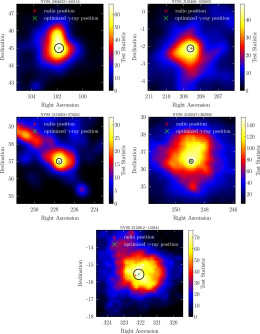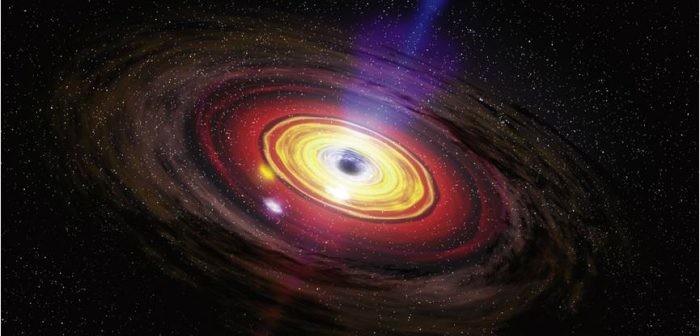Due to a recent software improvement, the Large Area Telescope (LAT) on board the Fermi Gamma-ray Space Telescope has discovered five gamma-ray blazars at high redshifts, opening a window to the early universe.
Spotting Pointed Activity

An artist’s illustration of the Fermi Gamma-ray Space Telescope. [NASA/General Dynamics]
Fermi-LAT has detected thousands of blazars in gamma rays; in fact, blazars have been found to be the most numerous gamma-ray population in our sky. In spite of this, Fermi hasn’t found any gamma-ray blazars at a redshift greater than z = 3.1 — likely because at this distance, the blazars’ gamma-ray emission is redshifted to lower frequencies at which the LAT is less sensitive.
A recent, spectacular set of improvements to Fermi data analysis, however, known as Pass 8, has substantially enhanced the sensitivity of LAT to gamma rays across the spectrum — with particular improvement at lower frequencies. Motivated by this increased sensitivity, a team of Fermi scientists has used the data from Pass 8 to search for especially distant gamma-ray-bright blazars.

Maps of the five high-redshift blazars detected by Fermi-LAT. [Ackermann et al. 2017]
Window to the Early Universe
The Fermi team began by selecting high-redshift radio-loud blazars from a known catalog of over a million quasars. They then searched for these ~1100 sources within the 92 months of LAT data produced by Pass 8.
This systematic search led to the detection of five new gamma-ray sources consistent with the positions of blazars at redshifts greater than z = 3.1 — including NVSS J151002+570243, which now qualifies as the most distant gamma-ray blazar known, at a redshift of z = 4.31.
Analysis of the sources’ spectral energy distributions verifies that they have all the properties expected of especially powerful blazars, confirming their identity. Modeling of their spectra suggests they harbor massive black holes in the range of hundreds of millions to tens of billions of solar masses. The properties of these sources allow the authors to estimate the space density of massive black holes hosted in jetted systems: roughly 70 per cubic gigaparsec.
Though these five new gamma-ray blazars may constitute a small sample, they provide information that can be used to begin to constrain our models of how supermassive black holes formed in the early universe. They’re also a shining example of the remarkable benefit possible with clever software improvements!
Citation
M. Ackermann et al 2017 ApJL 837 L5. doi:10.3847/2041-8213/aa5fff

